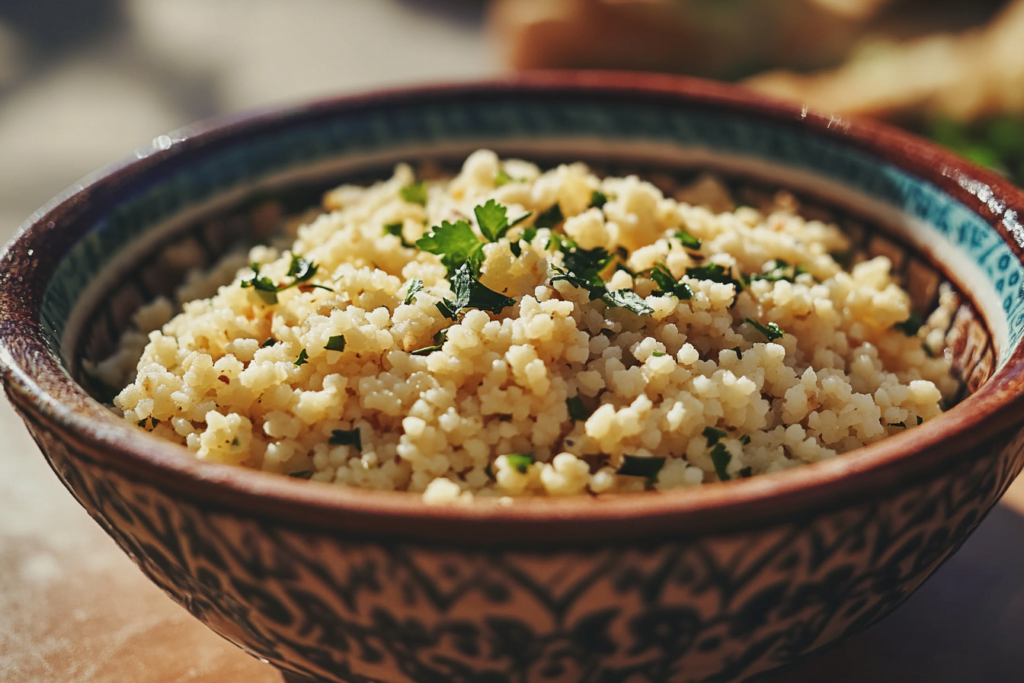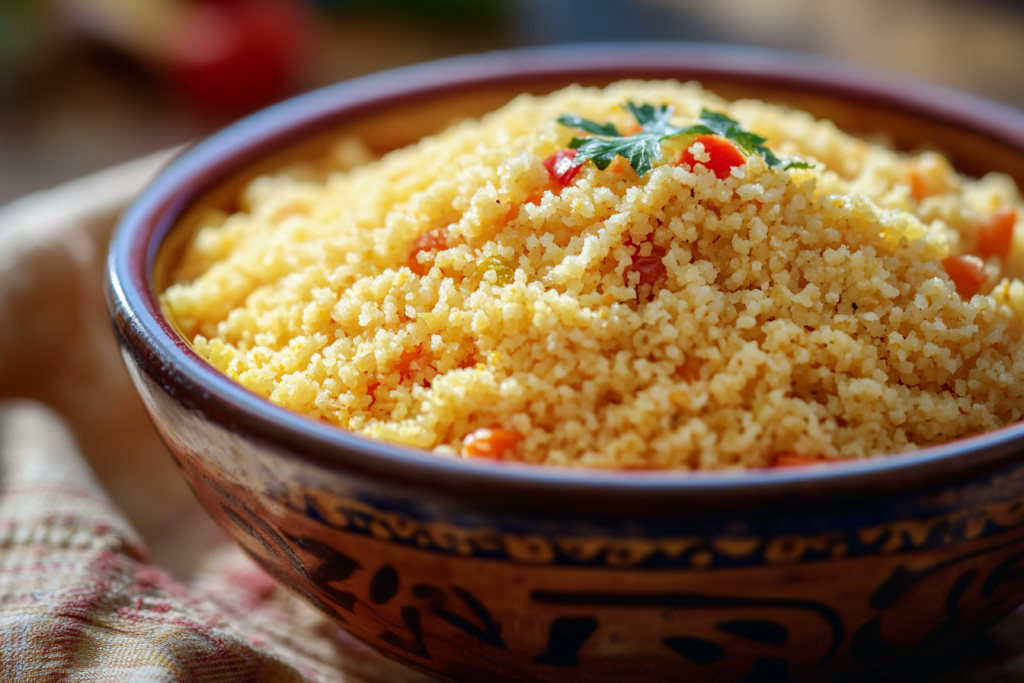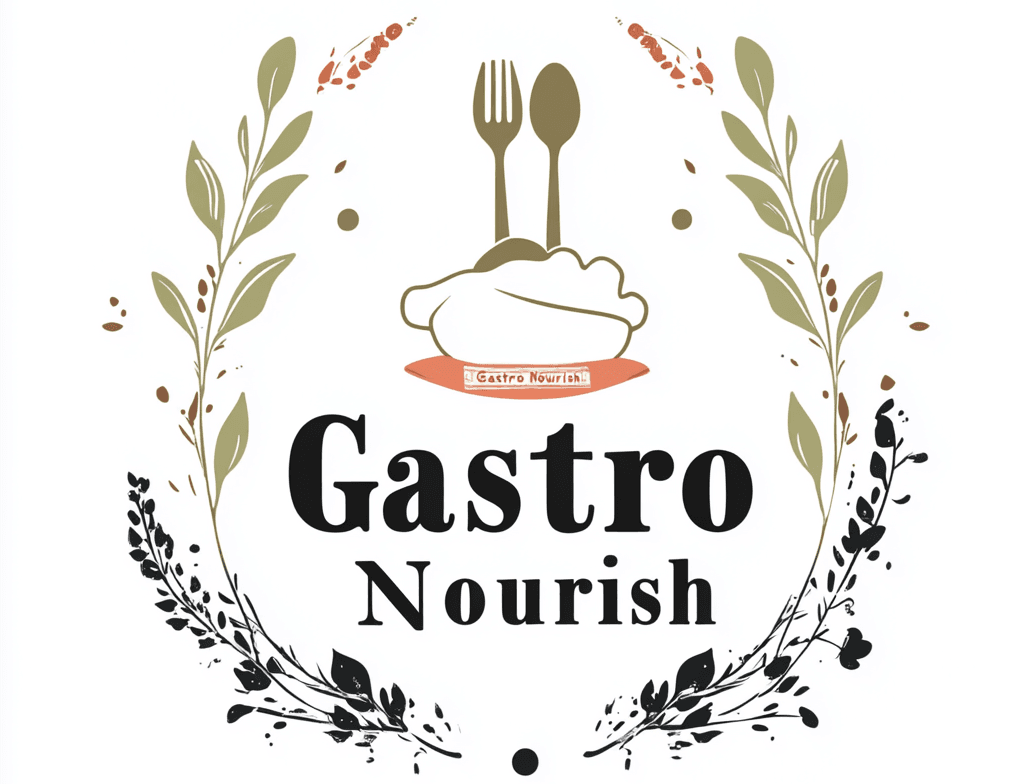Introduction to Couscous and Rice: Is Couscous Better for You Than Rice?

What is Couscous?
Couscous, often mistaken for a grain, is actually a type of pasta made from semolina flour. Originating from North Africa, it’s a staple in many Mediterranean diets. Couscous is known for its light, fluffy texture and quick cooking time, making it a convenient option for many dishes. It’s versatile, absorbing the flavors of the ingredients it’s cooked with, and can be served hot or cold.
What is Rice?
Rice, on the other hand, is a true grain and one of the most widely consumed staple foods globally. It comes in various types, including white, brown, basmati, and jasmine, each with its unique flavor and texture. Rice is a key component in many cuisines, from Asian to Latin American, and is celebrated for its ability to complement a wide range of dishes.
Nutritional Overview
Couscous Nutrition
When comparing couscous and rice, it’s essential to consider their nutritional profiles. Couscous is relatively low in calories and contains a moderate amount of protein. It’s also a good source of selenium, a mineral that plays a crucial role in metabolism and immune function. However, couscous is not gluten-free, which may be a consideration for those with gluten sensitivities.
Rice Nutrition
Rice, particularly brown rice, is rich in fiber, vitamins, and minerals. It provides a good amount of manganese, magnesium, and selenium. Brown rice, being a whole grain, retains its bran and germ, offering more nutrients than white rice. However, white rice is often enriched with vitamins and minerals to compensate for the loss during processing.
In this section, we’ve laid the groundwork for understanding the basic characteristics of couscous and rice. As we move forward, we’ll explore their health benefits, culinary uses, and how they fit into various dietary needs. Stay tuned for Part 2, where we’ll delve into the health benefits of each.
Health Benefits of Couscous and Rice
Health Benefits of Couscous
Couscous, with its light and fluffy texture, offers several health benefits that make it a worthy addition to your diet. For starters, it’s a low-fat food, which can be beneficial for those looking to maintain a healthy weight. The moderate protein content in couscous supports muscle repair and growth, making it a good option for active individuals.
Moreover, couscous is a decent source of selenium, an essential mineral that acts as a powerful antioxidant. Selenium helps protect cells from damage, supports thyroid function, and boosts the immune system. Including couscous in your diet can contribute to your daily selenium intake, promoting overall health.
However, it’s important to note that couscous is not suitable for those with gluten intolerance or celiac disease, as it is made from wheat. For those who can tolerate gluten, couscous can be a versatile and nutritious addition to meals.
Health Benefits of Rice
Rice, particularly brown rice, is celebrated for its health benefits. As a whole grain, brown rice retains its bran and germ, providing a rich source of fiber. This fiber content aids in digestion, helps maintain healthy blood sugar levels, and can contribute to a feeling of fullness, which may assist in weight management.
Brown rice is also packed with essential nutrients like manganese, which plays a role in bone health and metabolism, and magnesium, which is crucial for muscle and nerve function. Additionally, the antioxidants found in brown rice can help reduce inflammation and lower the risk of chronic diseases.
White rice, while less nutrient-dense than brown rice, is often enriched with vitamins and minerals, making it a valuable source of nutrients in many diets. It’s also easier to digest, which can be beneficial for individuals with certain digestive issues.
Incorporating rice into your diet can provide sustained energy, thanks to its carbohydrate content, and support overall health with its array of nutrients. Whether you choose brown or white rice, both offer unique benefits that can complement a balanced diet.
In this section, we’ve explored the health benefits of both couscous and rice, highlighting their nutritional contributions and potential advantages. In Part 3, we’ll examine the culinary uses and versatility of these two staples, helping you decide which might be better suited to your cooking style and dietary preferences.
Culinary Uses and Versatility

Culinary Uses of Couscous
Couscous is a culinary chameleon, easily adapting to a variety of dishes and flavors. Its quick cooking time—often just five minutes—makes it a go-to choice for busy cooks. You can serve couscous as a side dish, a base for stews, or even as a salad ingredient. Its ability to absorb flavors makes it perfect for dishes with rich sauces or spices.
In North African cuisine, couscous is traditionally paired with vegetables, meats, and aromatic spices like cumin and coriander. It can also be used in Mediterranean dishes, combined with fresh herbs, lemon juice, and olive oil for a refreshing salad. For a sweet twist, try adding dried fruits and nuts to couscous for a delightful dessert or breakfast option.
Culinary Uses of Rice
Rice is a staple in many global cuisines, offering endless possibilities in the kitchen. From sushi to risotto, rice can be transformed into a wide array of dishes. Its neutral flavor allows it to complement both savory and sweet ingredients, making it incredibly versatile.
In Asian cuisine, cooks often steam rice and serve it alongside stir-fries, curries, or grilled meats. Chefs use rice to make sushi, where its sticky texture is essential. Italian chefs use arborio rice to create creamy risottos. In Latin American dishes, cooks often combine rice with beans, spices, and vegetables.
Rice can also be a base for pilafs, where it’s cooked with broth and spices, or used in desserts like rice pudding. Whether you’re looking for a simple side dish or a complex main course, rice can adapt to your culinary needs.
Versatility Comparison
When it comes to versatility, both couscous and rice have their strengths. Couscous is ideal for quick meals and dishes that require a grain to soak up flavors. Its light texture makes it a great choice for salads and side dishes.
Rice, on the other hand, offers a broader range of textures and flavors, from the chewy bite of brown rice to the creamy consistency of risotto. Its ability to pair with a wide variety of ingredients makes it a staple in many cuisines.
Ultimately, the choice between couscous and rice may come down to personal preference and the specific dish you’re preparing. Both offer unique culinary possibilities that can enhance your meals.
In Part 4, we’ll explore how couscous and rice fit into various dietary needs, helping you determine which might be the better choice for your lifestyle.
Part 4: Dietary Considerations

Couscous in Different Diets
Couscous can be a valuable addition to many diets, but it’s important to consider its nutritional profile and dietary restrictions. For those following a low-fat diet, couscous is a great option due to its minimal fat content. It’s also a good source of carbohydrates, providing energy for active individuals or those needing a quick energy boost.
However, couscous is not suitable for gluten-free diets, as it is made from wheat. Those with celiac disease or gluten sensitivity should opt for alternatives like quinoa or gluten-free grains. For vegetarians and vegans, couscous can be a versatile base for plant-based dishes, pairing well with legumes, vegetables, and plant-based proteins.
Rice in Different Diets
Rice, with its diverse varieties, fits well into numerous dietary plans. Brown rice, being a whole grain, is an excellent choice for those following a high-fiber diet. Its fiber content aids digestion and can help maintain healthy cholesterol levels. For individuals on a gluten-free diet, rice is a safe and nutritious option, providing essential nutrients without gluten.
White rice, while lower in fiber, is often enriched with vitamins and minerals, making it a valuable part of many diets. It’s also easier to digest, which can be beneficial for those with digestive issues or recovering from illness. For athletes or those needing a quick source of carbohydrates, rice offers a readily available energy source.
Comparing Dietary Suitability
When comparing couscous and rice in terms of dietary suitability, it’s clear that each has its strengths. Couscous is a quick-cooking option for those without gluten restrictions, offering a light and fluffy texture that pairs well with various ingredients. It’s ideal for low-fat diets and can be a versatile addition to vegetarian meals.
Rice, particularly brown rice, is a powerhouse of nutrients and fiber, making it suitable for high-fiber and gluten-free diets. Its versatility in texture and flavor allows it to fit into a wide range of dietary needs, from high-energy meals for athletes to gentle options for those with digestive concerns.
Ultimately, the choice between couscous and rice will depend on individual dietary needs and preferences. Both can be part of a balanced diet, offering unique benefits that cater to different lifestyles.
In Part 5, we’ll address common questions and concerns about couscous and rice, providing clarity on their health impacts and culinary uses.
Part 5: Common Questions and Concerns
Is Couscous Better for You Than Rice?
The question of whether couscous is healthier than rice doesn’t have a straightforward answer, as it largely depends on individual dietary needs and preferences. Couscous is lower in calories and fat, making it a suitable choice for those watching their weight. Its selenium content also offers antioxidant benefits, which can support overall health.
On the other hand, rice, especially brown rice, is rich in fiber and essential nutrients like manganese and magnesium. These nutrients contribute to heart health, bone strength, and metabolic function. For those seeking a nutrient-dense option, brown rice may be the better choice.
Ultimately, both couscous and rice have their unique health benefits, and the “healthier” option will vary based on personal dietary goals and restrictions.
Can You Substitute Couscous for Rice?
Yes, you can substitute couscous for rice in many dishes, but it’s important to consider the differences in texture and flavor. Couscous has a lighter, fluffier texture compared to the denser, chewier texture of rice. This makes couscous a great substitute in dishes where a lighter grain is desired, such as salads or as a side dish to rich stews.
However, in dishes where the texture of rice is crucial, such as sushi or risotto, couscous may not be the best substitute. It’s also worth noting that couscous cooks much faster than rice, which can be a time-saving advantage in the kitchen.
When substituting, consider the flavor profile of your dish and how couscous might complement or alter it. With a bit of creativity, couscous can be a versatile alternative to rice in many recipes.
FAQs
- Is couscous gluten-free?
No, couscous is made from wheat and is not gluten-free. Those with gluten sensitivities should opt for alternatives like quinoa. - Which is better for weight loss, couscous or rice?
Couscous is lower in calories and fat, making it a good option for weight loss. However, brown rice’s fiber content can also aid in weight management by promoting fullness. - Can I eat rice every day?
Yes, rice can be part of a balanced diet when consumed in moderation. Opt for brown rice for added nutrients and fiber.
In Part 6, we’ll explore personal experiences and anecdotes related to couscous and rice, adding a personal touch to our comparison.
Part 6: Personal Experience
My Experience with Couscous and Rice
Growing Up with Rice
When it comes to choosing between couscous and rice, my culinary journey has been quite the adventure. Growing up, rice was a staple in our household. We had it with almost every meal, from simple steamed rice to more elaborate dishes like pilafs and stir-fries. The versatility of rice always amazed me. I could transform it into a creamy risotto one day and a fragrant biryani the next. I loved how rice could soak up the flavors of whatever it was paired with, making it a perfect canvas for culinary creativity.
Discovering Couscous
However, my introduction to couscous was a delightful surprise. I first encountered couscous at a Mediterranean restaurant, where they served it as a side dish with a rich lamb stew. The light, fluffy texture of couscous was a refreshing change from the denser texture of rice. Couscous beautifully absorbed the stew’s spices, creating a harmonious blend of flavors. Intrigued, I decided to experiment with couscous in my own kitchen.
Incorporating Couscous into Meals
What I found was that couscous was incredibly easy to prepare. Its quick cooking time was a lifesaver on busy weeknights when I needed to whip up a meal in a hurry. I began incorporating couscous into salads, mixing it with fresh herbs, lemon juice, and vegetables for a light and refreshing dish. It became a staple in my summer meals, offering a lighter alternative to rice.
Balancing Both Grains
Despite my newfound love for couscous, rice still holds a special place in my heart. There’s something comforting about a warm bowl of rice, whether it’s paired with a hearty curry or a simple stir-fry. The choice between couscous and rice often depends on the dish I’m preparing and the flavors I want to highlight.
In my experience, both couscous and rice have their unique charms. Couscous is perfect for quick, light meals, while rice offers a comforting, versatile base for a wide range of dishes. Whether I’m in the mood for a fluffy couscous salad or a savory rice pilaf, both grains have become essential components of my culinary repertoire.
Part 7: Environmental Impact and Sustainability
Environmental Impact of Couscous Production
Couscous, primarily made from durum wheat, has a relatively moderate environmental footprint compared to other grains. The production of wheat involves the use of fertilizers and water, but advancements in agricultural practices have helped reduce the environmental impact. Sustainable farming techniques, such as crop rotation and reduced pesticide use, are increasingly being adopted to minimize the ecological footprint of wheat cultivation.
However, the processing of wheat into couscous does require energy, which contributes to its overall environmental impact. Efforts to improve energy efficiency in food processing are ongoing, aiming to make couscous production more sustainable. Additionally, sourcing wheat from regions that practice sustainable agriculture can further reduce the environmental impact of couscous.
Environmental Impact of Rice Production
Rice production, on the other hand, presents more significant environmental challenges. Rice paddies are known to emit methane, a potent greenhouse gas, due to the anaerobic conditions in flooded fields. This contributes to the overall carbon footprint of rice cultivation. Moreover, rice farming is water-intensive, requiring large amounts of water for irrigation, which can strain local water resources.
Efforts to mitigate the environmental impact of rice production include the development of water-saving techniques, such as alternate wetting and drying, which reduces water usage and methane emissions. Additionally, research into rice varieties that require less water and produce lower methane emissions is ongoing, aiming to make rice cultivation more sustainable.
Sustainability Comparison
When comparing the sustainability of couscous and rice, couscous generally has a lower environmental impact due to its less intensive water and methane emissions. However, both industries are making strides toward more sustainable practices. Choosing products from brands that prioritize sustainability and support eco-friendly farming practices can help reduce the environmental impact of your food choices.
Ultimately, the decision between couscous and rice can also be influenced by their environmental impact. By supporting sustainable agriculture and being mindful of resource use, consumers can make more environmentally conscious choices.
In conclusion, both couscous and rice offer unique benefits and challenges, from their nutritional profiles to their environmental impacts. Whether you prefer the light, quick-cooking nature of couscous or the comforting versatility of rice, both can be part of a balanced and sustainable diet.

